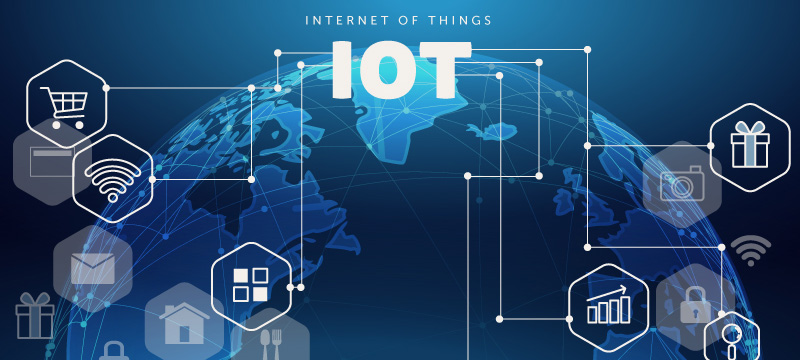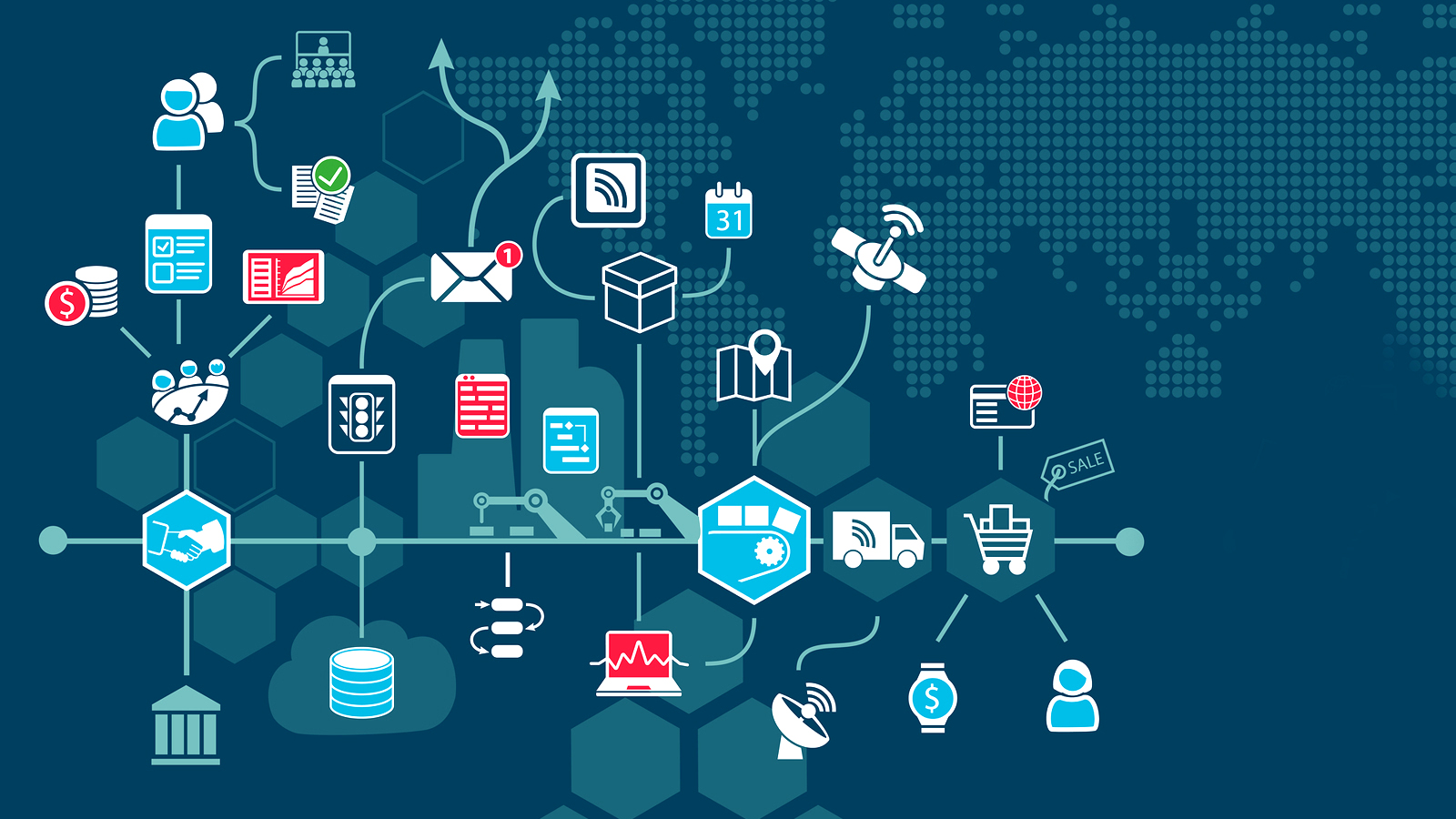Top IoT App Development Trends in 2024

A discussion of the future of IoT and why IoT app development is well-known for its ability to improve agility, productivity, and security.
As the Internet of Things (IoT) continues to evolve, 2024 is shaping up to be another transformative year for IoT app development. The growth in connected devices, smart applications, and seamless integration between hardware and software is leading to an exciting range of innovations across industries. This article dives into the top IoT app development trends expected to dominate in 2024, from enhanced connectivity to sustainable practices.
1. Edge Computing for IoT
Edge computing is emerging as a powerful complement to cloud-based IoT systems. Instead of sending all data to the cloud for processing, edge computing allows data to be processed closer to the source—right on the IoT devices themselves or nearby gateways. This reduces latency, improves real-time decision-making, and enhances security.
In 2024, edge computing will play a more significant role in IoT applications, particularly in industries where real-time processing is critical, such as autonomous vehicles, smart cities, and healthcare. For developers, designing apps that leverage edge computing will become essential for creating faster, more reliable, and responsive IoT solutions.
2. AI and Machine Learning Integration
Artificial Intelligence (AI) and Machine Learning (ML) have long been integral to IoT, enabling predictive maintenance, data analysis, and automated decision-making. In 2024, the integration of AI/ML into IoT applications is expected to deepen. AI-powered IoT devices will be able to learn from user behavior, optimize operations autonomously, and offer more personalized experiences.
For example, smart home devices equipped with AI will become even more intuitive, adjusting settings like temperature, lighting, and security based on user patterns. Meanwhile, industrial IoT (IIoT) applications will benefit from AI-driven predictive maintenance, reducing downtime and improving operational efficiency. Developers must be prepared to integrate AI models into their IoT apps, ensuring seamless collaboration between AI algorithms and connected devices.
3. 5G-Powered IoT Applications
With the global rollout of 5G networks, IoT is entering a new era of connectivity. 5G offers faster speeds, lower latency, and greater capacity than previous network generations, making it ideal for IoT applications that require real-time communication and massive device connections.
In 2024, 5G-powered IoT will revolutionize industries such as autonomous driving, telemedicine, and smart cities. The speed and responsiveness of 5G will allow IoT apps to handle data-heavy tasks like high-definition video streaming, remote surgeries, and large-scale sensor networks more effectively. IoT app developers will need to optimize their applications to take full advantage of 5G capabilities, enabling richer, more interactive user experiences.
4. Blockchain for IoT Security
Security has always been a significant concern in IoT, with connected devices being vulnerable to hacking, data breaches, and unauthorized access. Blockchain technology offers a potential solution by providing decentralized, tamper-resistant ledgers for securing IoT data transactions.
In 2024, blockchain will be increasingly integrated into IoT applications to enhance security, particularly in industries that handle sensitive data such as healthcare, finance, and supply chain management. Blockchain will enable trusted, transparent, and immutable data exchanges between IoT devices, reducing the risk of tampering and ensuring data integrity.
For developers, implementing blockchain protocols into IoT apps will become an essential practice for addressing security concerns. This will require knowledge of decentralized architectures, smart contracts, and encrypted data storage.
5. IoT-Enabled Sustainability and Green Tech
As the global emphasis on sustainability grows, IoT is playing an important role in green technology solutions. IoT devices are being used to monitor energy consumption, reduce waste, and improve resource efficiency across industries like agriculture, energy, and manufacturing.
In 2024, we expect to see an increase in IoT-enabled sustainability apps that help businesses and consumers monitor their environmental impact. Smart grids, for example, can optimize energy use in real-time, while IoT sensors in agriculture can help farmers conserve water and reduce pesticide use.
For developers, this trend presents an opportunity to create IoT applications that support environmental initiatives. Sustainability-focused IoT apps will require careful design to balance performance with low power consumption, and developers will need to prioritize energy-efficient coding practices.
6. Wearable IoT Devices
Wearable technology is one of the fastest-growing sectors in the IoT market, with devices ranging from fitness trackers to smartwatches and even smart clothing. In 2024, wearable IoT devices will become more sophisticated, offering enhanced health monitoring, productivity tracking, and even entertainment.
For instance, wearable health devices will be capable of monitoring vital signs continuously and alerting users or medical professionals to potential health issues in real time. In the workplace, wearable IoT devices will track employee performance, helping businesses optimize workflows and improve safety. The development of apps that integrate with these wearable devices will require a focus on user interface (UI) and user experience (UX) design to ensure seamless interaction and data visualization.
7. IoT in Healthcare
Healthcare remains one of the leading sectors for IoT innovation. In 2024, the convergence of IoT with telemedicine, remote patient monitoring, and AI-powered diagnostics will continue to transform the healthcare landscape.
IoT devices in healthcare will facilitate more proactive patient care, with wearable devices and smart sensors enabling continuous health monitoring. Hospitals and clinics will increasingly use IoT to track medical equipment, manage patient data, and even automate administrative tasks.
Developers working on healthcare IoT apps will need to focus on interoperability with existing healthcare systems, ensuring data security and compliance with regulations like HIPAA. Creating user-friendly interfaces for patients and medical professionals will be key to the success of IoT healthcare apps.
8. Smart Homes and IoT Ecosystems
Smart home devices are becoming more interconnected, allowing users to control various aspects of their homes—such as lighting, heating, security, and entertainment—from a single platform. In 2024, smart home ecosystems will continue to expand, with devices from different manufacturers working together seamlessly.
Developers will need to build IoT apps that can integrate with multiple devices and platforms, providing users with a unified experience. Compatibility with popular voice assistants like Amazon Alexa, Google Assistant, and Apple HomeKit will be essential, as consumers expect voice-controlled smart home management to be part of the IoT app experience.
9. Digital Twins
Digital twins—virtual replicas of physical objects or systems—are becoming increasingly popular in IoT applications. These digital models allow businesses to simulate real-world scenarios, predict outcomes, and optimize performance without disrupting operations.
In 2024, digital twin technology will see wider adoption in industries like manufacturing, logistics, and urban planning. IoT sensors will feed real-time data into digital twins, enabling businesses to monitor and improve the performance of everything from industrial machinery to entire cities.
Developers will need to create apps that can visualize and analyze data from digital twins, providing actionable insights to users. This will require a deep understanding of simulation modeling, data integration, and user-friendly interfaces.
10. IoT and Smart Cities
Smart cities are one of the most ambitious applications of IoT technology, with connected devices being used to improve urban living conditions, reduce energy consumption, and enhance public safety. In 2024, more cities will adopt IoT solutions to manage traffic flow, monitor air quality, and optimize waste management.
Developers working on IoT apps for smart cities will need to focus on scalability and reliability. IoT apps will need to handle massive amounts of data from a wide range of sensors and devices, providing city officials with real-time insights and the ability to respond to incidents quickly.
11. Voice-Activated IoT Applications
Voice recognition technology is advancing rapidly, and in 2024, voice-activated IoT applications will become more prevalent. From smart home devices to industrial equipment, voice control will offer users a hands-free way to interact with IoT systems.
For developers, this trend presents an opportunity to create voice-controlled IoT apps that integrate with AI-powered voice assistants. Ensuring accuracy in voice recognition, natural language processing, and multi-language support will be essential to developing effective voice-activated IoT solutions.
Conclusion
2024 is poised to be a groundbreaking year for IoT app development, with trends like edge computing, AI integration, 5G, and blockchain driving the evolution of connected devices. Developers will need to stay ahead of these trends by focusing on security, sustainability, and user-centric design. The potential for IoT to transform industries from healthcare to smart cities is immense, and the apps built in 2024 will play a critical role in shaping the future of connected technology.



